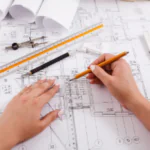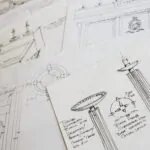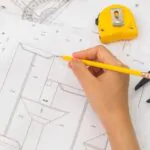A patent is an exclusive right granted for an invention, which is a product or a process that provides, a new way of doing something, or offers a new technical solution to a problem. A patent draft, in general, is a technical document presented in a legal format that has
two primary functions: (a) establish novelty and (b) establish inventive step or non-obviousness of an invention. To get a patent, technical information about the invention must be disclosed to the public in a patent application.
An Inventor should always keep in mind that the purpose of a patent draft or specification is to highlight the existing problem in the current state of the art or technology and provide a solution, which is new and not obvious to a person skilled in the art.
So, How do we write a Patent Application? –
A patent application is individually written for a specific invention, and thus can be a complicated and involved document. An application must include a written description of the invention that would enable a person skilled in the relevant technical field to both make and use the invention. This description virtually always includes illustrations of the invention and also describes the best manner known to the inventor for practicing the invention. The application includes an oath signed by the inventors that attests that they believe the application complies with the requirements of the patent laws, and the application concludes with claims that lay out the scope of protection that is provided for the disclosed technology. The decision of grant is based on the written specification as most of the times an examiner would not ask for a model or prototype or the product. The patent draft should be drafted in a manner to fully or particularly describe an invention, as a result allowing a person skilled in the art to perform the invention without any undue diligence.
PARTS OF A PATENT SPECIFICATION
- Title of the invention;
- Field of the invention;
- Background of the invention;
- Object of the invention;
- Summary of the invention;
- Brief description of the drawing;
- Detailed description of the invention;
- Claim(s);
STEPS OF PATENT DRAFTING
Step 1: Determine Novelty
The novelty of an invention is determined prior art search
Step 2: Determine Inventiveness or non-obviousness
The inventiveness of a mechanical invention can be determined by setting up problem-solution statement and compare it with the existing art and create a claim strategy.
Step 3: Drafting Patent Specification
The drafting should highlight novelty and inventiveness in each section.
Formulate Claim Strategy: Before drafting, a claim strategy should be formulated which includes combining the Novelty and Inventiveness, “venting of conditioned air in a particular section of bed with flexible partition of bed longitudinally.”
Importance of Patent Drawings in a patent application: –
A patent application with the best of the drawings will be a best one for the explanation of the invention. Good draftsman makes accurate formal drawings which in turn make the strong and best patent. To fully understand a patent, drawings play a key role. Well prepared drawings expands the understanding of the patent, that is also a legislative requirement put down by many patent office across the globe. Particularly, patents in technical fields like Mechanical, Life Sciences, Bio-Medical devices etc., you may not be able to understand the invention without the help of accurately drafted formal patent illustrations. Patent drawings are administered by guidelines specific to the Patent Office which permit the patent illustrations to be later printed in the issued patent. Often, replicas of conventional engineering drawings or simply rough sketches can be used for the preparation and initial filing of a provisional patent application. Although, ultimately, formal drawings should be submitted for design and utility patent applications in order to meet the Patent Office requirements.
Over the years, The Patent Drawing Services has developed deep expertise in preparing formal patent drawing for multiple jurisdictions from scratch, and converting drawings of one jurisdiction in another jurisdiction. The Patent Drawing Services has a team of seasoned draftsman who prepare drawings as per USPTO, Indian, European, Chinese, Korean, Australian, Japanese and various other patent office requirements. We have vast experience in preparing illustrations related to a number of domains including Biotech, Pharmaceutical, IT, computers, telecom, electronics, mechanical, automotive, consumer durables and general utility. Using the latest tools, including AutoCAD, TurboCAD, CorelDRAW, and Visio, we have been delivering zero error high quality drawings to law firms and corporate legal departments.
Have any more queries? Drop an email to info@thepatentdrawing.com, our patent expert will reach out to you soon.







